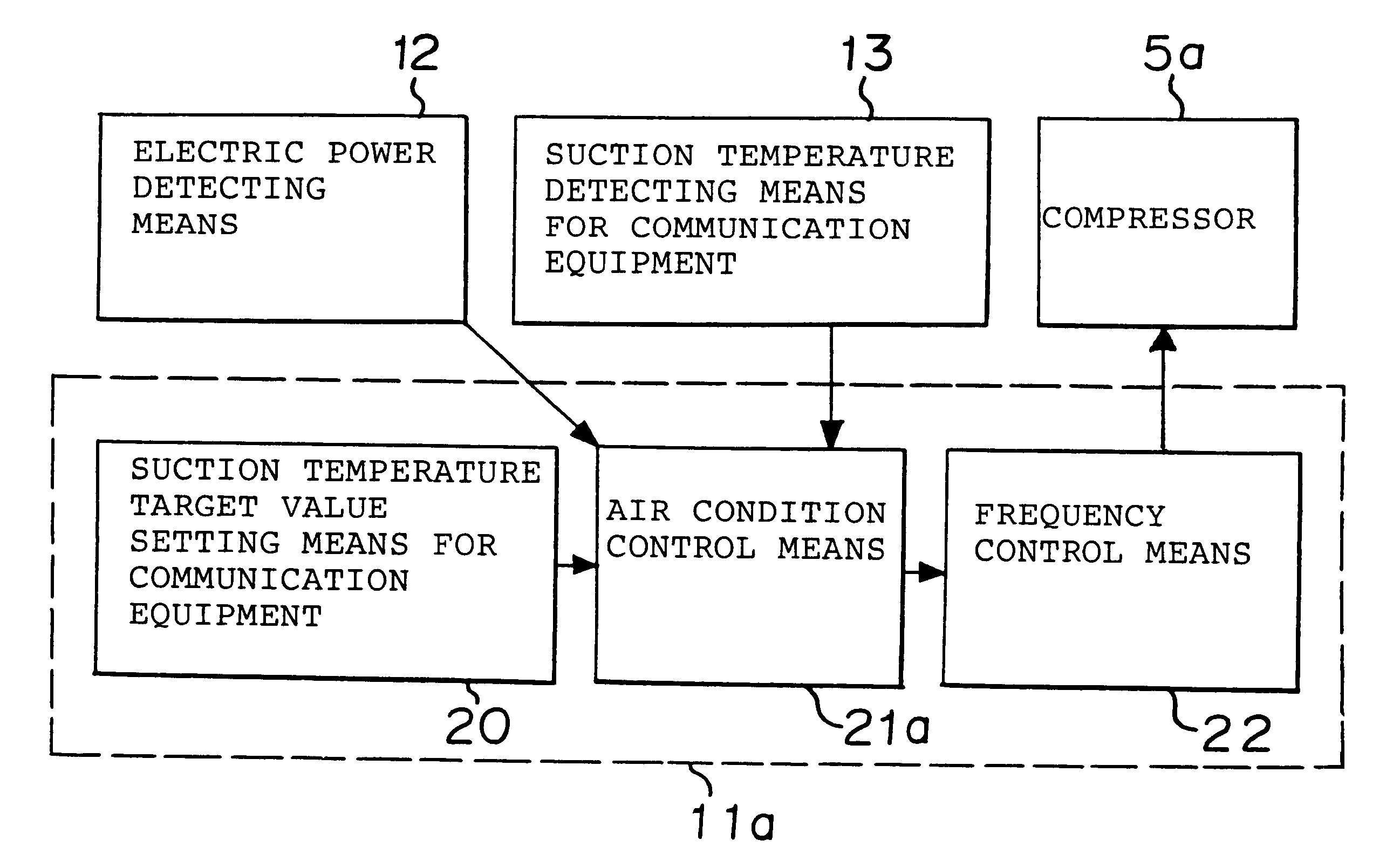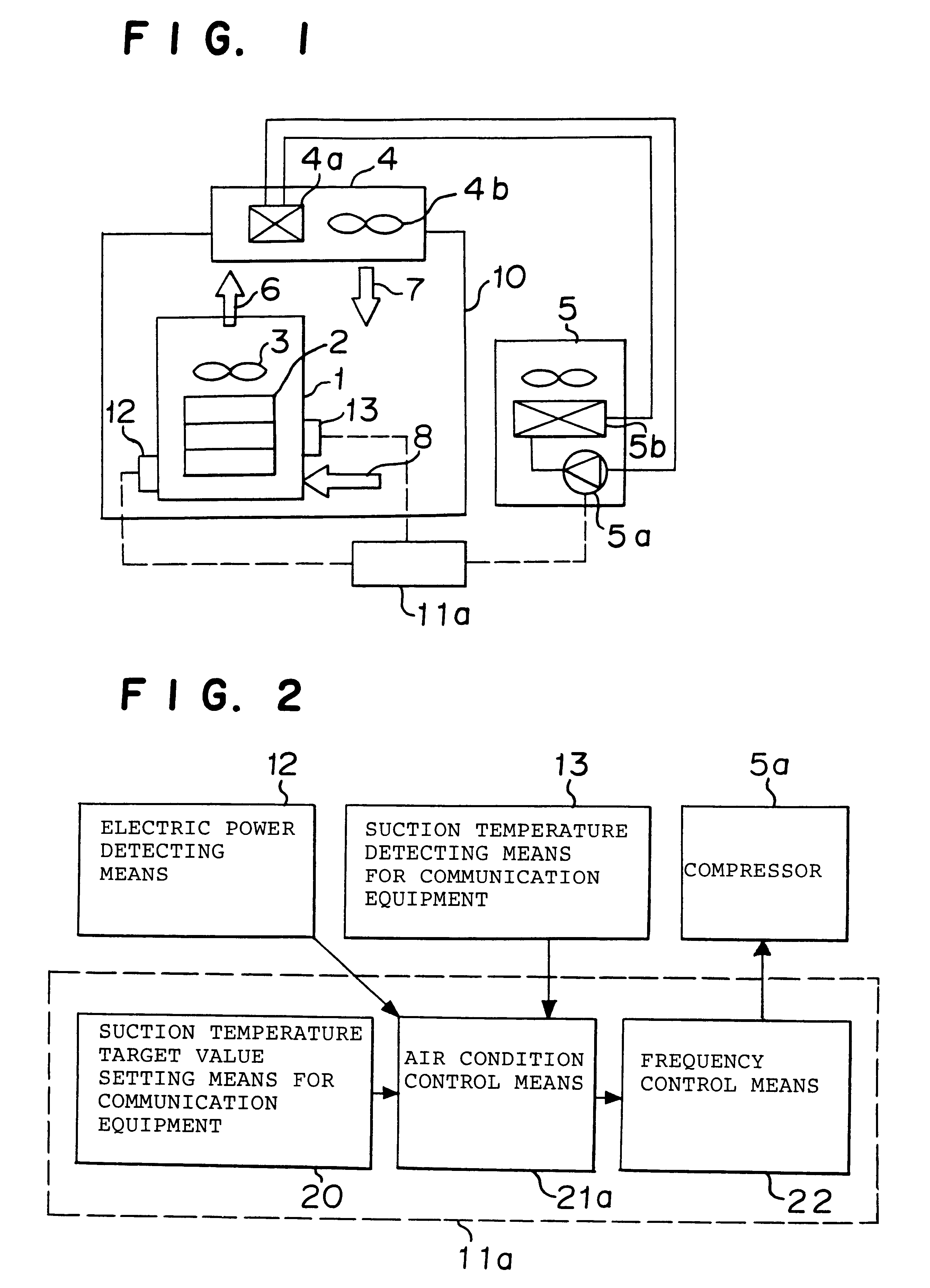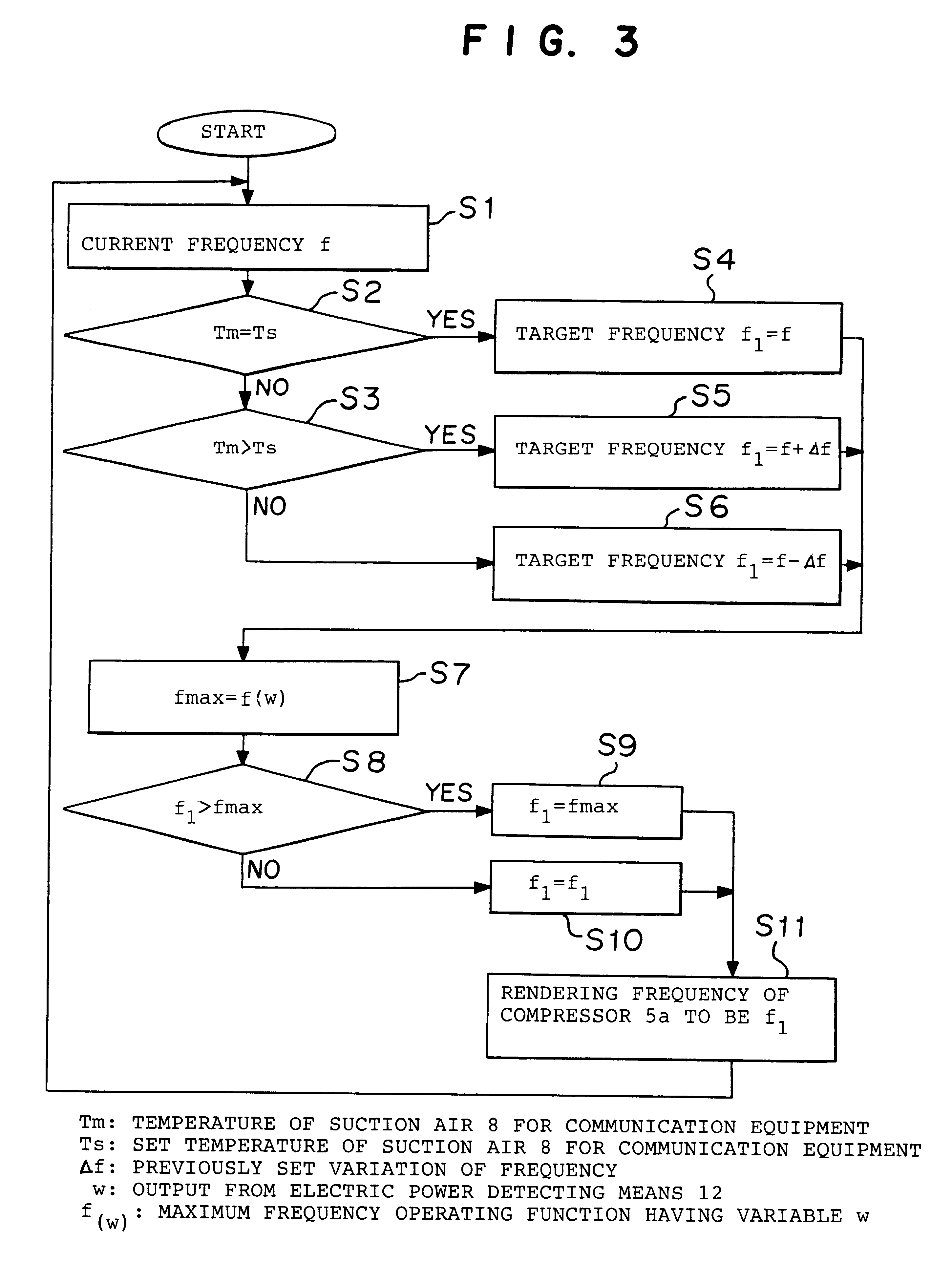Method for controlling to cool a communication station
- Summary
- Abstract
- Description
- Claims
- Application Information
AI Technical Summary
Benefits of technology
Problems solved by technology
Method used
Image
Examples
embodiment 5
A structure according to Embodiment 5 of the present invention is illustrated in FIG. 24. The auxiliary cooling device, described in Embodiment 4, is substituted by a boiling type cooling device 31 including an evaporator 31a and a condenser 31b, wherein the evaporator 31a is located on an upper stream side in the airflow path, in which the main cooling device is located. The boiling type cooling device 31 has a characteristic that as a difference between an evaporative temperature in the evaporator 31a and a condensing temperature in the condenser 31b located in an outdoor unit of the boiling type cooling device increases, a capability is further demonstrated, basically in proportion thereto. Further, the boiling type cooling device 31 is inputted from only a blower 31c. Therefore, it is possible to highly efficiently use the air conditioner by making the air path of the indoor unit commonly use for that of the air conditioner and the air path of the indoor unit commonly use for th...
embodiment 6
An operation of the cooling control method for the communication station according to Embodiment 6 will be described in reference of FIGS. 1 and 2. In the cooling control method for the communication station, the suction air temperature in the communication equipments 2 is controlled to be within a normal temperature by supplying a predetermined amount of the suction air 8 to the communication equipments 2 by the fan 4b. In general, the temperature of the suction air 8 is controlled to be 20.degree. C. or less. The suction air 8 is heated after cooling the communication equipments 2, sucked into the indoor unit 4 as the suction air 6, cooled by the indoor heat exchanger 4a, returned to the casing 10 as the blowing out air 7, and again provided to cool the communication equipments 2 as the suction air 8 for the communication equipments. The cooling control means 11a controls the temperature of the suction air 8 to be the set temperature, e.g. 20.degree. C., or less based on outputs f...
embodiment 7
Hereinbelow, an example according to Embodiment 7 of the present invention will be described.
FIG. 6 illustrates a structure of the cooling control method for the communication station according to Embodiment 7 of the present invention. FIG. 25 is a block chart illustrating the cooling control method according to Embodiment 7. In FIGS. 6 and 25, numerical references the same as in FIGS. 1 and 2 designate the same or similar portions and description of these portions is omitted. Numerical reference 11b designates the cooling control means for controlling the cooling capability of the air conditioner.
An operation of the cooling control method for the communication station according to Embodiment 7 will be described in reference of Figures. FIG. 26 is a flowchart illustrating an operation of the cooling control method 11b. A procedure until the steps S9 and S10 is similar to that in the examples of Embodiment 6. After calculating the frequency f, in the step S9 or S10, in step S31, a su...
PUM
 Login to View More
Login to View More Abstract
Description
Claims
Application Information
 Login to View More
Login to View More - R&D
- Intellectual Property
- Life Sciences
- Materials
- Tech Scout
- Unparalleled Data Quality
- Higher Quality Content
- 60% Fewer Hallucinations
Browse by: Latest US Patents, China's latest patents, Technical Efficacy Thesaurus, Application Domain, Technology Topic, Popular Technical Reports.
© 2025 PatSnap. All rights reserved.Legal|Privacy policy|Modern Slavery Act Transparency Statement|Sitemap|About US| Contact US: help@patsnap.com



